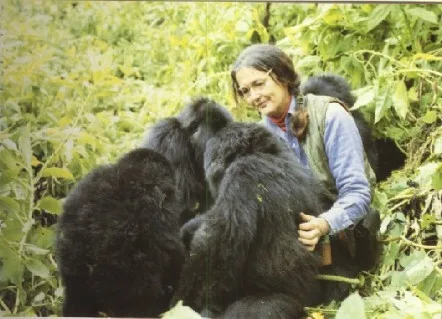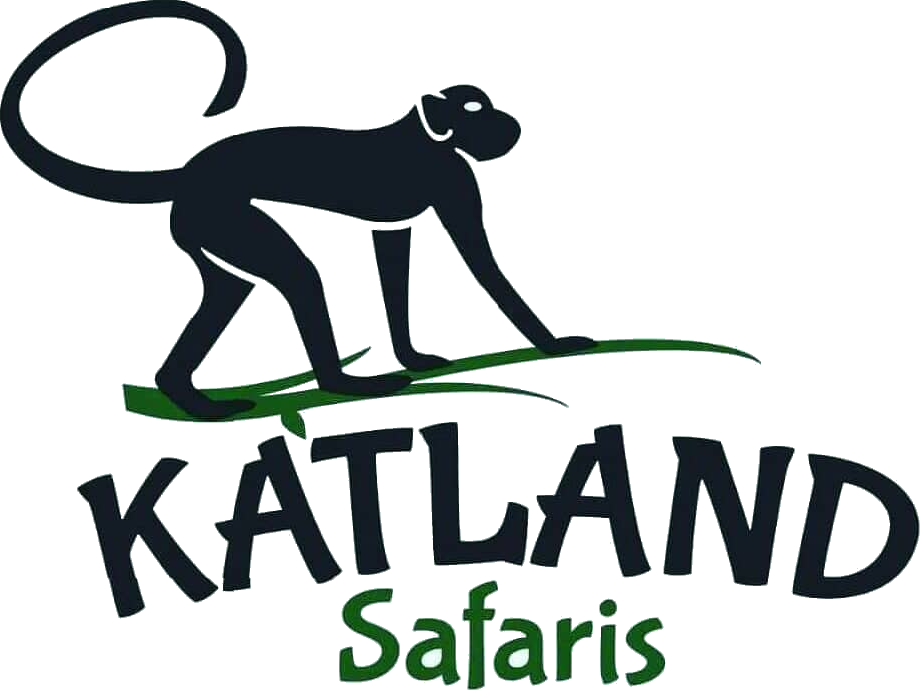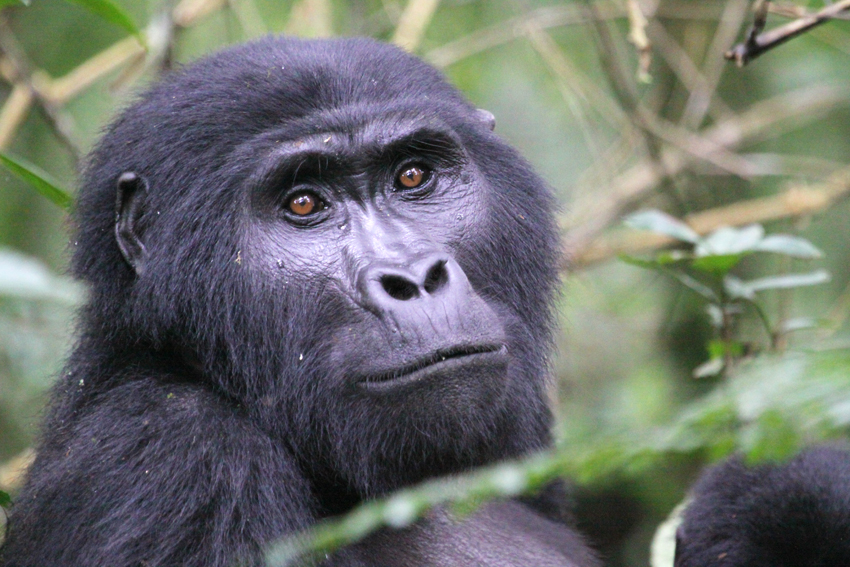Life Of Dian Fossey And Mountain gorillas In Rwanda.
About Mountain Gorillas and Dian Fossey’s Lives American philanthropist Dian Fossey spent her life studying mountain gorillas in Rwanda, and she started a project called gorilla trekking or habituation. She established the Karisoke Research Center in Rwanda’s Volcanoes National Park after arriving there in 1967.
Range mapping, gorilla documentation, naming, and daily visits to the mountain gorillas to attempt to understand them were all part of her research. Her study serves as the foundation for all current studies on mountain gorillas in the Virunga region.
She discovered throughout her research that the greatest threat to the mountain gorillas’ existence is the local population around the gorilla trekking parks. Poaching, snare-setting, livestock grazing, and habitat encroachment were all common human activities in the gorilla environment.
Dian Fossey was brutally killed in 1985 because of her fervor for protecting the mute mountain gorillas, which caused her to clash with the locals.
Statement Regarding Dian Fossey’s Experience with Gorilla Poachers
After almost two hours of intense searching, no further corpses or other signs of Kweli were found. Two people were officially listed as dead. Then, other camp workers were brought in to assist in transporting Macho’s corpse back to Karisoke. As the young mother was thrown into a filthy litter, Bill gazed at her tormented face, her eyes permanently dulled. Six months before, on our first day in the Virungas, she and Kweli were the first gorillas to welcome us.
On a foggy day during the dry season, as the procession made its way slowly back to camp, Bill pondered why the poachers hadn’t taken her head as well. Before she fell, she had only run thirty yards. Her murderer could have easily located her and chopped off her head, just as they did with Uncle Bert.
Did they abandon her in favor of Kweli, a live baby who was more valuable? However, there was no indication that poachers were pursuing the baby. Was David there to stop the poachers in their tracks? Did they murder only for amusement? Was it retaliation?
Late that afternoon, Vatiri came back with concrete proof that the gorilla and their assailants had not met by accident. The poachers had reportedly kept an eye on the group’s activities from their tent, which they had set up for at least two nights on a hill just west of the assault location.
They must have assumed that David would rejoin the gang the morning of their assault because they had seen his regular arrivals and departures. This time commitment was obviously premeditated. However, the readiness to take a chance also suggested that one expected to be rewarded. Why didn’t they take another head, then? Why did they not go after Kweli? Or did they?
The last items of information to consider for the day came from the return of David’s group and the Army. The surviving gorillas eventually slowed down to eat and rest after they had trailed group 4 far into Congo. Because of this, David and Amy were able to go near enough to confirm that Kweli was alive and with the others. However, the juvenile gorilla had also been shot.
This seemed to support the murderers’ desire for a live baby and the silverback’s head. Local poachers were after mountain gorillas because these were the two most valuable items on the brutal global market.
Regardless of the cause of the most recent murders, it did not explain why the poachers seemed to have abandoned their gruesome mission so quickly. David would have undoubtedly heard the gunfire if he had been near enough to stop them.
Vatiri came back the next day to follow the poachers to their camp in the park in the commune of Mukingo, which is home to the bourgmestre with the scar and the attitude.
In the meanwhile, Dian traveled down the mountain for the first time to seek the assistance of local prosecutor PAULIN Nkubili in order to apprehend previously identified individuals from that region. All we could do was assist David in following Group 4 and crossing our fingers.
The fact that Group 4 had escaped far into Congo, almost to the foot of Mount Mikeno, was unexpected. The realization that we had previously visited the region was equally unexpected.
Five months before, Dian had sent Ian, me, and a few Rwandan camp employees to scare the gorillas out of what she thought was a significant poaching region. We were to create as much noise as we could until the group fled, then we were to line up on the side opposite the way we wanted them to go.
To get the required effect, Ian shot a handgun at least twice into the air. Group 4 returned to the Visoke slopes after two days of these ambushes, seemingly oblivious to our participation in the deception. Or at least when we approached them the next day in our capacity as academics, they didn’t take it personally.
However, even with instructions and the best of intentions, it was awkward to terrify them as we did. Now, questioning if we had made the correct decision was even more unsettling.
Would Mikeno have been a better option? No, Mikeno is a haven for poachers. But notice what happened—walking in the forest gives you plenty of time to reflect. Too much at times.
Kweli was everyone’s preoccupation as David and I watched Group 4. He was hesitant to move his left arm and was obviously in agony. But maybe he had a chance, Tiger and Beetsme.
Beestsme, meantime, started making what can only be described as pitiful efforts at vocalizations and silver back displays. In the summer of 1978, Beetsme was estimated to be eleven or twelve years old.
Several years before, he had moved into Group 4—the only known case of a single male group transfer. Dian said, “Beats me!” in amazement when asked what she believed of his origins. Along with her unusual spelling, the moniker remained.
Under normal circumstances, Beetsme would have been too young to assume the role of leader, but in this particular circumstance, this was a positive indication. He may be able to keep the gang together and prevent further fatalities if he could take on the duties and obligations of a silver back. The three-month-old Mwelu, the one-month-old Frito, and maybe the three-and-a-half-year-old Titus were the most vulnerable.
An established silverback will probably live into his thirties under normal conditions. He ought to have produced a successor from his own lineage at this time.
In Group 5, this was the case with Beethoven and Icarus.However, Uncle Bert had died in his prime in Group 4, and Digit, his only heir, had been slain six months before. A condition that almost ever arises in nature—a group of females and early babies without any adult males—was brought about by these fatalities.
A new silverback, with or without his own organization, would most likely take over and fill this gap. He would probably murder the group’s youngest babies in the process.
The Digit Fund For Gorillas was established in response to the loss of mountain gorillas who were dear to her in December 1977. Poachers severed Digit’s hands and decapitated him.
Walter Cronkite announced this impolite conduct during the nightly newscast on CBS. She used this cash to advocate for financing for mountain gorilla conservation. The Dian Fossey Gorilla Fund International was the new name given to the fund.
Why Travel to Africa for Gorilla Trekking?
The conservation of mountain gorillas in Africa is supported by the money raised by gorilla trekking and habituation. There were only approximately 300 mountain gorillas left in the world by the 1980s, and they were in danger of becoming extinct.
The funds you spend on gorilla habituation or trekking are used to expand the number of ranger guides patrolling the region, provide them with advanced training on how to protect trekkers, educate park employees about mountain gorillas, and much more.
Twenty percent of the yearly proceeds from the sale of gorilla permits are returned to the local community. This is one method of involving children in protecting the mountain gorillas who sometimes wander into their gardens. They are urged to report them to the authorities so that prompt action may be done, rather than murdering them.
During gorilla trekking, you may obtain assistance and hire a porter for a reasonable charge. This is one approach to directly support the advantages that the presence of mountain gorillas provides to the local population.
When Is the Best Time to Reserve a Safari for Gorilla Trekking?
Gorilla trekking is available year-round in both Rwanda and Uganda. The sole factor influencing when you can follow mountain gorillas is the state of the forest.
The Virunga woodland region has high rainfall from March to May and November, which causes the rivers to flood. The soil’s volcanic composition prevents water from soaking in quickly, resulting in wet ground. When walking on muddy terrain, you need to wear comfortable safari tracking boots that won’t sink.
Although fewer people go at this time, those who do have a greater chance of seeing newborns, having a gorilla family all to themselves, getting special treatment at the lodges, and more.
The region sees a lot of tourists from June to September and December to mid-January. This is the busiest time of year for gorilla trekking safaris. Because they graze closer to the ground, the pathways have less foliage, the ground is less damp, and many other factors, the gorillas are easier to get to.
Because of the reduced humidity in the forest and other factors, taking pictures is simpler at this season. If there are eight trekkers in the group hiking gorillas, you should anticipate being impeded.
Ninety days prior to the anticipated gorilla trekking date is the latest time to schedule the gorilla trekking safari. This is for planning ahead, such as making hotel reservations, hiring an experienced guide, renting an appropriate vehicle, particularly a four-wheel drive vehicle, and much more. Rushing to make last-minute reservations for a gorilla trekking expedition is necessary.
Things to Bring for Rwandan and Ugandan Gorilla Trekking
You may avoid the hassle of trying to find your baggage if you pack minimally yet appropriately. All you need is an easy-to-carry duffel bag that you can repack if you need to switch lodges.
A flash-proof and sound-proof camera to capture images of your mountain gorilla encounter
Wearing pajamas during the evening
A lightweight, waterproof bag that will keep your possessions safe in the wild.
Safari tracking boots are sufficiently comfortable for hiking slopes and do not sink while walking on muddy terrain.
A folding hat to shield your head from jungle buzzing insects
Safari convertible pants and shirts that are resistant to stains in the wild, such as Khaki.
If you don’t have time to clean your shoes, you may store them in a shoe bag. They won’t leave stains on the rest of your clothing when you pack them.
Personal toiletries in the event that your resort does not provide these services
If you need to make an in-person transaction, have some cash on hand to convert to local currency. Due of the long process of recovering money from them, credit cards are not widely utilized in Africa.
A torch for use when the lights go out at night.
Wearing garden gloves while gorilla trekking might help you maintain a firmer grip on slippery creepers or prevent you from tripping and falling.
Sweet treats to eat when hiking in search of the mountain gorillas. You should have breakfast early enough to last you the whole day in the wilderness. It’s unclear when the mountain gorillas were found.
A fleece or jumper, since the Virunga region often experiences very chilly mornings and nights.
When it rains in the forest, wear a rain court. Rainfall is unpredictable in this tropical region.
If your devices run out of power, you may use a charger or travel adapter to recharge them.
Get in touch with us and don’t forget to go through our travel adviser for further details on Dian Fossey’s life and the mountain gorillas in Rwanda.


